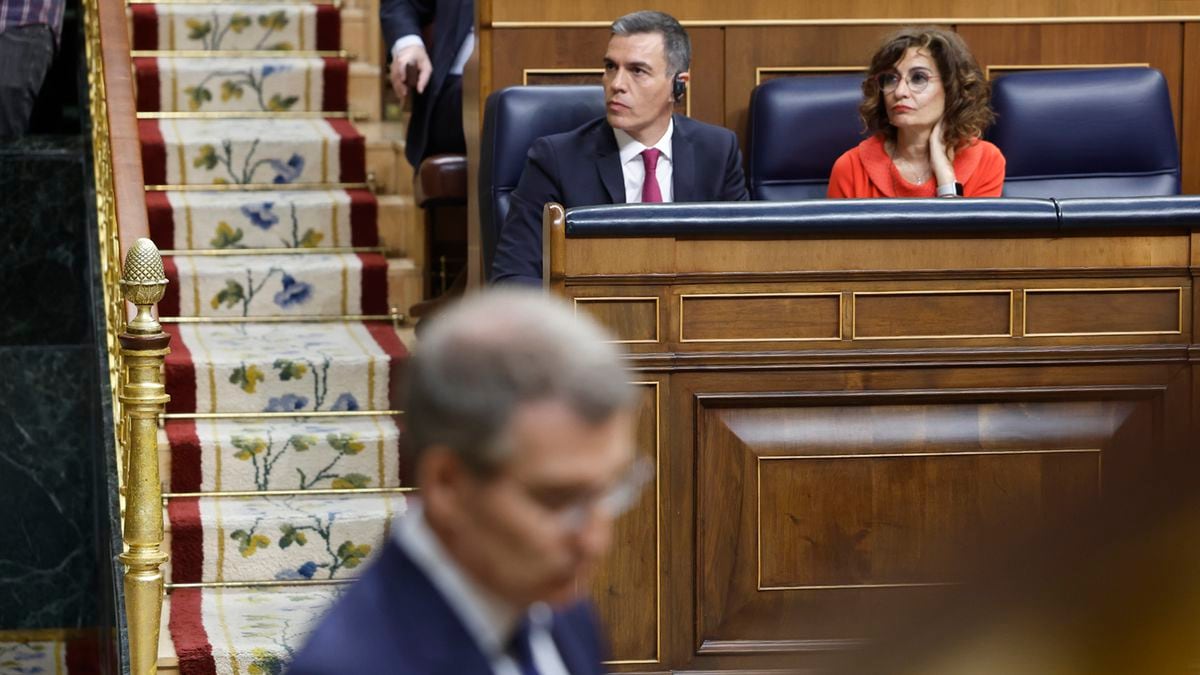The Spanish economy is emerging from the severe economic crisis induced by the pandemic.
A crisis that interrupted the recovery from the financial crisis at the end of the first decade of the 21st century, when the heavy burdens of its harsh legacy had not yet been consolidated or absorbed.
Together, both crises have meant a sudden deviation from the path of growth and modernization of the Spanish economy of the democratic period and membership of the EU.
The recovery is solidly underway, but it is early to know its scope and whether it will be the starting point of a new stage of solid and sustainable growth.
the whole series
The pandemic has heightened interest in the demographic and economic setbacks of the past.
There is no doubt that some of such depressions and crises have contributed to generating important changes in the development of humanity;
however, the recoveries subsequent to these catastrophes have also had a notable influence on the economic history of the different countries.
It is therefore of great interest to review our past and contemplate the current recovery of the Spanish economy in view of the patterns that were followed in past episodes, even if they were in contexts of very different economic regimes and even in stages in which the degrees of integration of the different Spanish territories were still very low, so the speeds and paths of the reaction were quite uneven in the various regions.
The reality that the world is experiencing shows that the disturbing influence of demographic and health phenomena has not disappeared and that it will continue to be a recurrent threat to growth, well-being and equity, although economic development and great scientific advances have limited substantially its potential impact and facilitated a more immediate reactivation.
In order to place the current situation of recovery after the pandemic crisis in a historical perspective, a series of articles have been prepared that will be published in
Negocios
over the next few weeks and that will analyze how the Spanish economy reacted in a selection of convulsive episodes.
The revision dates back to the expansion and transformations of the fifteenth century, after the prolonged and profound crisis of the Late Middle Ages, in which the Black Death — so remembered with the pandemic — had devastating effects.
Antoni Furió will precisely open the series with an article about coming out of the late medieval depression.
Apart from highlighting the sharp contrasts in the chronology and features of this phenomenon in the different peninsular spaces, the author maintains that the crisis ended up propitiating a profound transformation of the productive structures, accelerating processes that, in some cases, had already been developing for a long time. , such as the growing mercantile orientation of the economy and the increase in productivity.
A second relevant episode was the crisis of the 17th century and the subsequent recovery, which had very different magnitudes and characteristics in the interior and peripheral territories.
Gabriel Jover attributes the disparities to the various institutional frameworks, to the different environmental conditions and to the dissimilar manorial and land ownership regimes.
The article by Enrique Llopis, for its part, examines the vigorous revival after the severe demographic and economic disasters and the prolonged armed conflict in the first 15 years of the 19th century.
In it, it is argued that such recovery was fundamentally based on a land-breaking movement of enormous magnitude, in an eminently agrarian economy, caused by the bankruptcy of the Old Regime as a result of the invasion of the country by Napoleonic troops.
More information
Lessons from the recession
Already in the 20th century, Jordi Catalan explains the rehabilitation of growth in the 1950s, after 20 years marked by the international depression of 1929, the Civil War and the application of the most radical and pernicious version of autarchic and interventionist politics of the first Francoism.
The author attributes this behavior to the disappearance of some production bottlenecks, the enormous accumulated backwardness, the spread of the second industrial revolution, the importation of technology and the increase in purchasing power abroad.
After the phase of rapid growth that followed the Stabilization Plan of 1959, the economy had to face the energy crisis of the 1970s.
Rafael Myro highlights the role played on that occasion by the control of inflation, devaluations of the peseta and the expansion of public spending, together with the revulsion of entry into the EEC, the labor reform and industrial reconversion, in the settlement a solid growth phase.
And in the 21st century, Carlos Martínez Mongay will analyze the difficult recovery after the financial crisis, aggravated by errors in economic policy.
He identifies as main factors the restructuring of the banking system, which had to be done with the financial support of the EU;
the internal devaluation and the labor reform, which served to correct the imbalance in competitiveness and the change in orientation of fiscal policy.
Finally, José Luis Malo de Molina will delve into the different nature of the pandemic crisis and the exceptional response of economic policy, which, overcoming taboos and inertia, was able to compensate for the sudden slowdown in activity and sustain income.
However, he stresses that the innovations introduced have opened the door to complex challenges such as the sustainability of public finances, the reappearance of inflationary pressures and the management of massive European funds linked to reforms.
Such a long review reveals the existence of very different patterns in the recovery processes due to the different nature of the factors that triggered the previous disturbances, due to their diverse temporal sequence, due to the engines that revived growth, due to the role of policies and for the legacy they left behind.
But they do give a vision of the fragility and resistance of the Spanish economy, which, updated, are illustrative of the challenges facing the restoration of dynamism after the profound shock of the pandemic, still surrounded by high uncertainty, despite of the remarkable vigor and promptness with which it has reacted.
Enrique Llopis
is Professor of History and Economic Institutions at the Complutense University.
José Luis Malo de Molina
is an economist.


/cloudfront-eu-central-1.images.arcpublishing.com/prisa/6UILSHI4OVDJJMD2GLI5FLRMZY.jpg)



/cloudfront-eu-central-1.images.arcpublishing.com/prisa/K5MEQYX754ZCFV3SALU5I2KWQQ.jpg)


